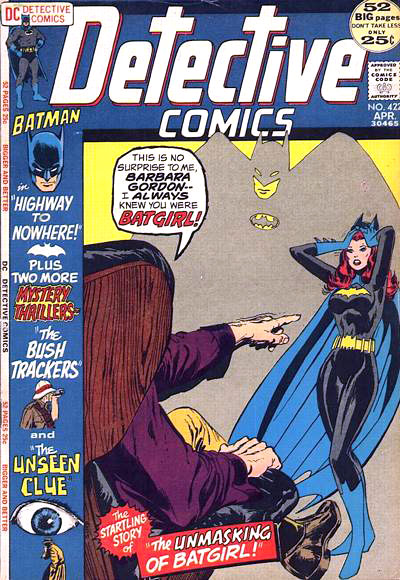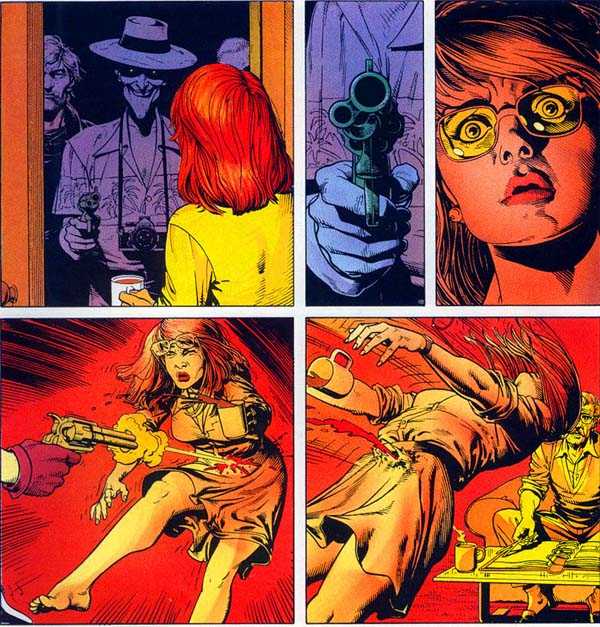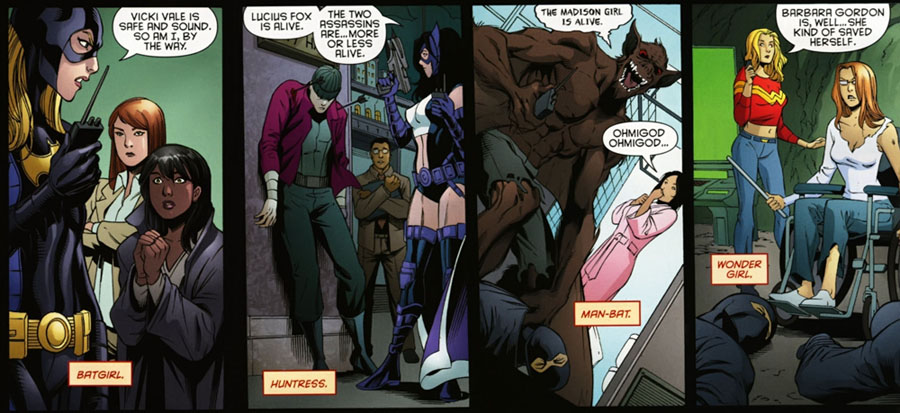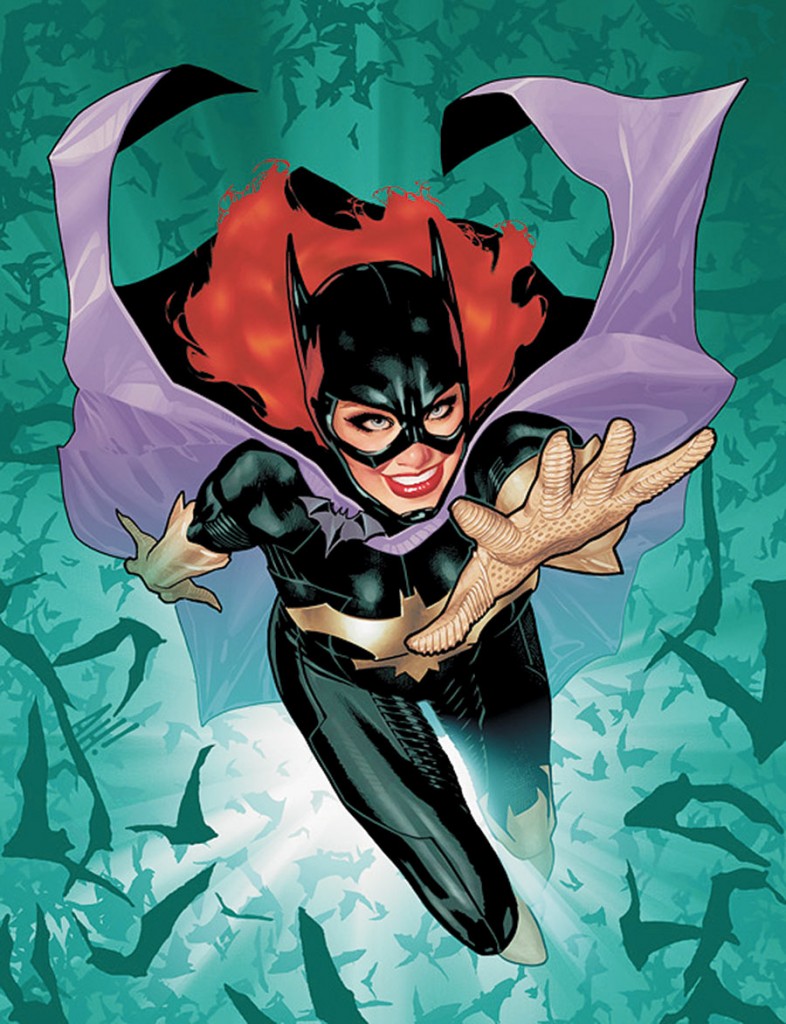Here’s something you probably don’t know about me: I’m blind.
I’m not completely without sight; with glasses and magnification, I see well enough to read and write. I get almost all of my comics digitally for this reason. Computers are wonderful things that let me enlarge the comics until I can see the illustrations and read the text; without digital comics, I’d be hunched over each issue with a magnifying glass and a headache.
As I’ve said in previous articles, comics are a form of escapism for a lot of people, myself included. They’re a look into a world where people with incredible power work for and protect normal citizens, where justice is something that happens whether it’s through the legal system or not, and where, no matter what happens to our heroes, they almost always get better. It’s something that I struggle with reading or seeing in a lot of different mediums; while it’s great to encounter characters that I love recovering from things that I haven’t been able to beat, it’s also frustrating, because I’d like to see situations like my own handled with a touch of realism, too.
It’s a problem that a lot of minorities face: being represented in ways that are promoting a stereotype, or are inconsistent with the reality of the situation in question, or any number of other problems. Most people will readily acknowledge that there are problems with both the number and the quality of characters of color or LGBTQIA* characters; some will also admit that the way women are represented in media is problematic. While these are all very true, it feels to me that the portrayal of characters with disabilities often gets shoved under the rug.
With all of that in mind, let’s talk about Barbara Gordon.
Barbara was the Silver Age Batgirl. She wasn’t the first to fill the suit (though people often forget about Bette Kane), but she’s arguably the most well-known woman to do so. With her bright red hair and eye-catching uniform, Barbara was the Batgirl to Dick Grayson’s Robin, helping the Dynamic Duo with their fight against crime in Gotham City throughout the Silver Age.

Barbara was Batgirl for years, but as time went on, she became less and less satisfied with her role. By 1988 she had more or less retired, but in the graphic novel The Killing Joke the danger came to her. In an attempt to drive her father, police commissioner James Gordon, insane, the Joker shoots Barbara through the spine and takes photos of her in various states of undress. The story is less about Barbara and more about her father and the Batman himself, but there’s no way to say that it isn’t a turning point for her story as well.

She could have faded into obscurity at that point, but author John Ostrander rescued Barbara only a year later. The events of The Killing Joke left Barbara paralyzed below the waist, but instead of being forgotten except when a writer wanted to use her as Dick’s girlfriend, Ostrander made a new identity for her.
Barbara became Oracle.
As Oracle, Barbara created a worldwide communications and information network. She learned how to use her computing and technological skills to find information that the superheroes needed to solve their cases and catch their criminals. Though she’s commonly thought of as a Batman family operative, Oracle was also a member of the Birds of Prey and Batman Incorporated, and worked closely with the Justice League and Suicide Squad.
Over time, Oracle became an invaluable resource for the heroes of the DC universe at large. She could find and hack into anything, and the fact that she was confined to a wheelchair didn’t prevent her from doing that. Barbara didn’t let her paralysis keep her from staying in shape, either; though she lost use of her legs, Barbara never stopped working her upper body, and it served her well time and time again.

This is the story I want to see more. It’s nice that people can recover from injuries that would leave most of us paralyzed or permanently disabled or worse, but sometimes wish fulfillment isn’t what I’m looking for. I want to see how characters learn to live with their disabilities, how they figure out how to work within their limitations without being defined by them, and without stepping back into the shadows. I want Oracle directing things from behind the scenes; I want Oracle being the source of information for the hero community at large. I want stories about the woman who got sucker punched by life, and who managed to dust herself off and keep pushing forward despite her disability.
That’s why it hurt so much when, in DC’s 2011 reboot, Barbara’s tenure as Oracle was erased, and she was returned to her role as Batgirl.
It’s no secret that I’m not a fan of the reboot in general; I think that it’s a poor idea that was executed even more poorly, and most of the universe-wide changes and wide sweeps of forgotten continuity are a slap in the face to anyone who loved the characters pre-reboot. This is most evident with Barbara who, after spending years building her identity as Oracle, even going so far as to say that she made more of a difference as Oracle than she ever had as Batgirl, was magically given back her mobility and her old identity when the universe reset itself. Barbara’s Batgirl is now the star of her own eponymous book, and she’s never been Oracle.

I’ll be completely honest with you: other than the few tie-in issues that have been part of events that I’ve read, I haven’t touched the reboot’s iteration of Batgirl. Part of this is because I’m really very fond of both of the Batgirls who came after Barbara and the reboot wiped them out of continuity, but more of it is that I can’t bring myself to read about a Barbara who hasn’t gone through and overcome what Oracle did. Oracle was an inspiring, amazing character, and to take all of that development from her is disrespectful not only of Barbara herself, but also of the creators who have built the character and the fans who have loved her.
I’ve heard a bunch of good things about Gail Simone’s version of Batgirl. Simone wrote a lot of Barbara as Oracle, so I’m sure she has an excellent grasp of the character. Apparently Barbara’s Batgirl is suffering from PTSD or something similar due to the event s of The Killing Joke, and knowing what I do of Simone’s writing, it’s probably handled well. My issue isn’t with the new writer and what she may or may not be doing; my issue is with the editorial decision to take away one of the very few disabled superheroes that we had in popular culture, indirectly saying that Barbara has more worth with her mobility than she does without it. It came as an especially harsh hit because the reboot – and Barbara’s renewed mobility – came only three years after Dan Didio, then-senior vice president and executive editor, promised that Barbara would never regain her mobility, and would keep her disability and her identity.
Are there other superheroes who have disabilities? Of course. Marvel’s Daredevil is the prominent example, and until recently, we also had Professor X. Hawkeye was blind for a bit a few years ago, though that was later cured, and there are characters like Cyborg, who is more cybernetic parts than original human parts at this point. The fact remains that superheroes with disabilities are few and far between, and someone having a disability isn’t automatic ground for a reader to identify with them – it might happen, but that’s not how I operate as a reader. If it was, I’d be a big fan of Daredevil; as it is, I haven’t been able to get into his character. Barbara was my go-to when I wanted to read about someone who kicked ass and took names, and was also disabled. Now DC has taken that away, and it’s just one more reason why I’m so dissatisfied with the current editorial direction that they’ve taken.
Here’s to you, Oracle. May you live on in trade paperbacks forever.
The Killing Joke. Written by Alan Moore; art by Brian Bolland. Published 1988. Find it on Amazon or buy it from comixology.
Birds of Prey: Old Friends, New Enemies. Written by Chuck Dixon; art by Greg Land. Published 2003; collects #1-6, Birds of Prey: Wolves, Bird of Prey: Batgirl. Find it on Amazon or buy it from comixology.
Batgirl: The Darkest Reflection. Written by Gail Simone; art by Ardian Syaf. Published 2012; collects #1-6. Find it on Amazon or buy it from comixology.
Comments? Questions? Leave a reply! I’ll be happy to talk comics with you.
